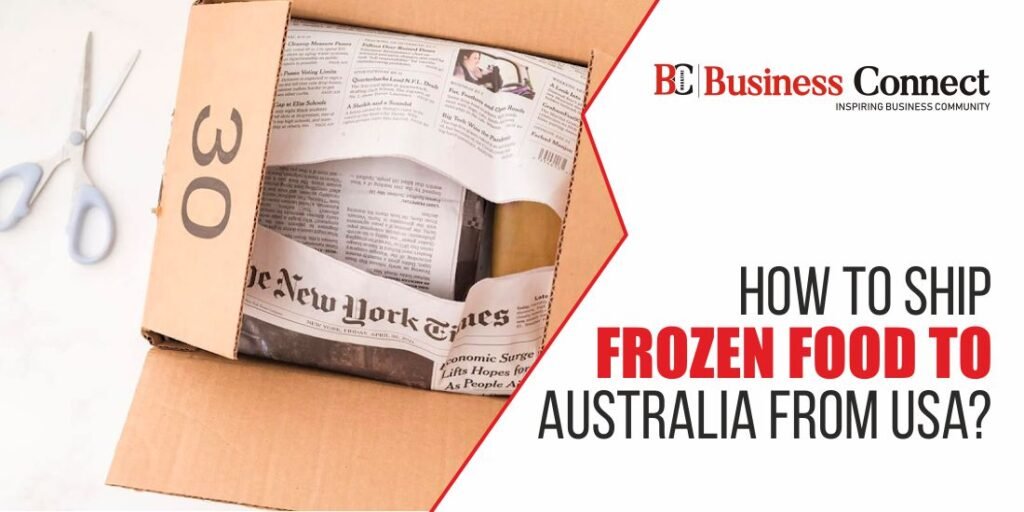How to Ship Frozen Food to Australia from USA?
Shipping frozen food from the United States to Australia requires careful planning and adherence to certain regulations to ensure the products remain frozen and safe during transit. In this guide, we will walk you through the steps involved in cheap shipping to Australia of frozen foods, covering packaging, documentation, and shipping methods.
Please note that while this guide provides general information, it’s essential to consult with shipping carriers and local authorities for the most up-to-date and accurate regulations and procedures.
What is Frozen Food?
Frozen food refers to food items that have been subjected to freezing temperatures to preserve their freshness and extend their shelf life.
Freezing is a widely used method of food preservation that involves reducing the temperature of food to below its freezing point, typically around -18°C (0°F). This process slows down the growth of microorganisms, enzymes, and other factors that cause food spoilage, thereby maintaining the quality and nutritional value of the food for an extended period.
Frozen food can encompass a wide range of products, including:
- Fruits and Vegetables
- Meat and Poultry
- Seafood
- Prepared Meals
- Bakery Products
- Dairy Products
- Snacks and Appetizers
- Desserts and Ice Cream Novelties
Why Time is Important for Shipping Frozen Food?
Time is crucial when shipping frozen food due to its perishable nature. Frozen food relies on maintaining a consistently low temperature to prevent the growth of harmful bacteria and maintain its quality
Guide to Ship Frozen Food to Australia
Follow this step-by-step guide to sending frozen food to Australia:
Research Import Regulations
The first step in shipping frozen food to Australia is to familiarize yourself with the country’s import regulations. The Australian Department of Agriculture, Water and the Environment (DAWE) is responsible for regulating the importation of food products.
Some items may require permits, while others may be restricted or prohibited. It’s crucial to determine whether your specific food products are eligible for import and what documentation is required.
Packaging and Insulation
Proper packaging and insulation are vital to maintaining the frozen state of your food products during transit. Here are some key considerations:
a. Select sturdy, insulated packaging materials such as expanded polystyrene (EPS) foam or dry ice boxes.
b. Use an appropriate amount of dry ice to ensure the products remain frozen throughout the shipping period. Consult with your carrier for guidance on the amount of dry ice required.
c. Wrap each individual food item in moisture-resistant, airtight packaging to prevent leakage and cross-contamination.
d. Place frozen food items in resealable plastic bags or airtight containers to provide an extra layer of protection.
e. Use sturdy boxes that can withstand the rigors of shipping. Consider double-boxing for added insulation and protection.
f. Clearly label the package as “Perishable” and “Keep Frozen” to alert handlers and customs officials.
Choose a Reliable Shipping Carrier
Select a reputable shipping carrier experienced in handling perishable goods. Look for carriers that offer specialized services for shipping frozen items internationally. Some carriers may have restrictions on shipping certain types of frozen foods, so confirm with them beforehand. Additionally, consider the transit time and cost when choosing a carrier.
Complete the Required Documentation
Accurate and complete documentation is crucial when shipping frozen food internationally. Ensure you have the following documents:
a. Commercial Invoice: Provide a detailed invoice describing the contents, quantities, and values of the frozen food items. Include the country of origin and any applicable harmonized system codes.
b. Packing List: Prepare a packing list that specifies each item, its quantity, and its packaging materials.
c. Health Certificate: Depending on the type of food being shipped, you may need to obtain a health certificate from the appropriate U.S. regulatory agency certifying that the products meet Australian health and safety standards.
d. Import Permits: Some frozen food items may require import permits from the Australian government. Check with the DAWE to determine if you need any specific permits and obtain them before shipping.
e. Other Documents: Depending on the nature of the food products, additional documents such as certificates of analysis, shelf life, or allergen statements may be required.
Customs Clearance and Quarantine
Australian customs and quarantine procedures are stringent, particularly for food products. Be prepared for your shipment to undergo thorough inspections upon arrival. Ensure that all necessary documents accompany the shipment and that they are accurate and complete. Non-compliance with regulations may result in delays or even rejection of the shipment.
Monitor Transit and Delivery
Once your shipment is in transit, stay in touch with your shipping carrier to track its progress. Monitor the temperature throughout the journey and ensure it remains within the recommended range. If any issues arise during transit, contact the carrier immediately to address them.
New Update: The 10 Most Trusted Logistics Companies in India
Communicate with the Recipient
Notify the recipient in Australia about the shipment’s expected arrival date and any special instructions for handling the frozen food items. Advise them to be present for delivery to ensure timely acceptance and proper storage of the products.
Follow Up and Evaluate
After the shipment has been successfully delivered, follow up with the recipient to confirm the quality and condition of the frozen food items. Use their feedback to assess the effectiveness of your shipping process and make any necessary adjustments for future shipments.
Final Thoughts
Remember, shipping frozen food internationally can be complex, and regulations are subject to change. It’s essential to consult with experts, such as shipping carriers and relevant government agencies, to ensure compliance with current requirements. By following the steps outlined in this guide, you’ll be better prepared to ship frozen food from the United States to Australia.



